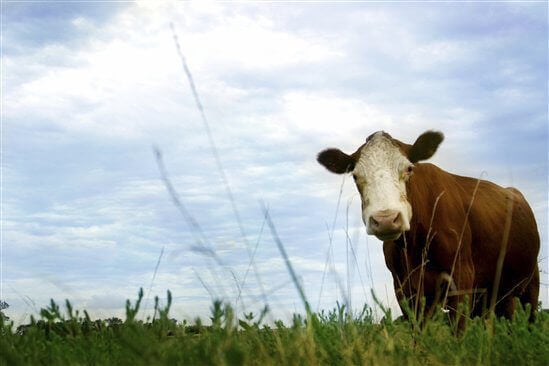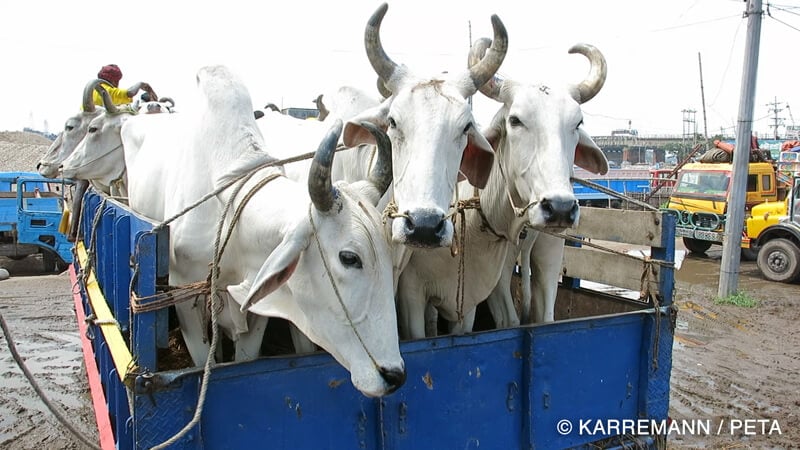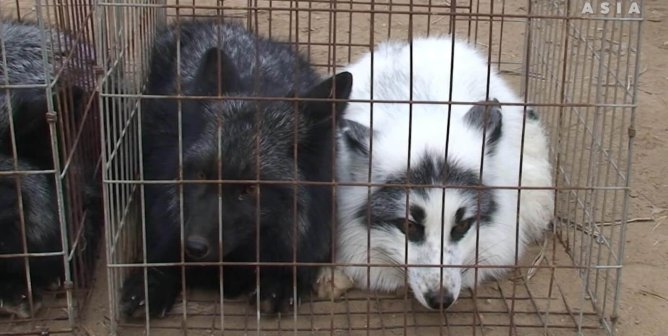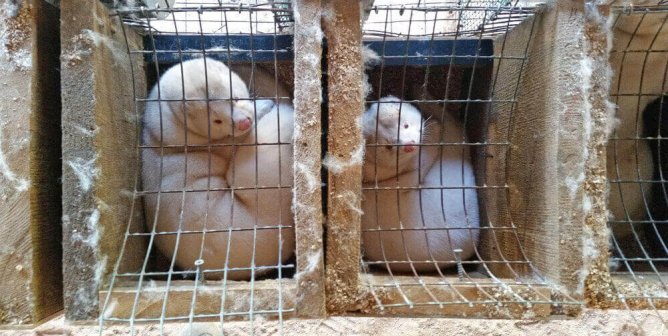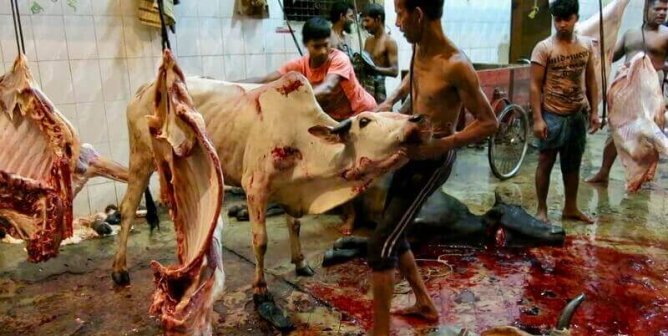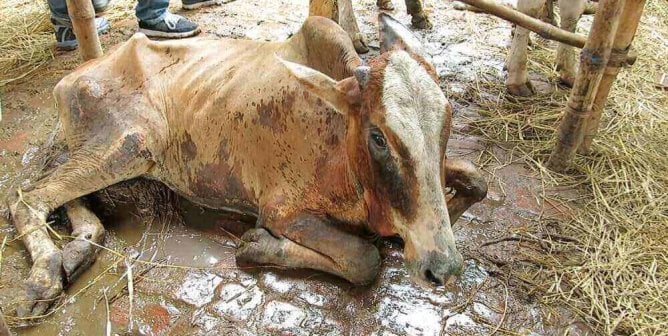Environmental Hazards of Leather
Raising animals for food and leather requires huge amounts of feed, pastureland, water, and fossil fuels. Animals on factory farms produce 130 times as much excrement as the entire human population, without the benefit of waste treatment plants. The U.S. Environmental Protection Agency (EPA) has even acknowledged that livestock pollution is the greatest threat to our waterways.
Although some leather makers deceptively tout their products as “eco-friendly,” turning skin into leather also requires massive amounts of energy and dangerous chemicals, including mineral salts, formaldehyde, coal-tar derivatives, and various oils, dyes, and finishes, some of them cyanide-based. Most leather produced in the U.S. is chrome-tanned, and all wastes containing chromium are considered hazardous by the EPA.
Tannery waste contains large amounts of pollutants, such as salt, lime sludge, sulfides, and acids. The process of tanning stabilizes the collagen or protein fibers in skins so that they stop biodegrading—otherwise, the leather would rot right in your closet.
People who work in and live near tanneries suffer, too. Many die of cancer possibly caused by exposure to toxic chemicals used to process and dye the leather. The Centers for Disease Control and Prevention found that the incidence of leukemia among residents in an area near one tannery in Kentucky was five times the U.S. average.
Arsenic, a common tannery chemical, has long been associated with lung cancer in workers who are exposed to it on a regular basis. Studies of leather-tannery workers in Sweden and Italy found cancer risks “between 20% and 50% above [those] expected.”
In addition, raising the animals whose skin eventually becomes leather requires vast quantities of water and wide tracts of pastureland, which must be cleared of trees. In fact, in the last half century, 70 percent of the Amazon rainforest has been cleared to make way for pastures or for growing feed crops. This mass deforestation causes habitat loss for millions of species, eliminates the Earth’s tree canopy, and drives climate change. Animal agriculture and its methane- and nitrous oxide–rich products, including leather, are leading contributors to climate change.
Runoff from feedlots and dairy farms also creates a major source of water pollution. Leather has one of the greatest impacts on eutrophication of all materials used for fashion, a serious ecological problem in which runoff waste creates an overgrowth of plant life in water systems, which suffocates animals by depleting oxygen levels in the water and is the leading cause of hypoxic zones, also known as “dead zones.” The EPA has confirmed that factory farms account for 70 percent of the water pollution in the U.S. By some estimates, animal agriculture is responsible for more greenhouse gases than all of the world’s transportation systems combined.
Huge amounts of fossil fuels are consumed in livestock production as well, and cow-derived leather has almost three times the negative environmental impact as its synthetic counterparts, including polyurethane (PU) leather.
The production of leather hurts animals, the environment, and the workers who manufacture it. The only ones who benefit are people who profit from the misery and suffering of others. Thankfully, there are plenty of sustainable vegan leather options to choose from today that mimic the properties of leather without the cruelty to animals or environmental devastation.
Vegan leathers can be made from a variety of materials, including recycled plastic, pineapples, cork, mushrooms, and polyurethane. Not only are they kinder to animals, they also contribute far less to water pollution, water depletion, and greenhouse gas emissions than leather made from cows’ skin.
Learn more about the ingenious ways designers are making vegan leather.

